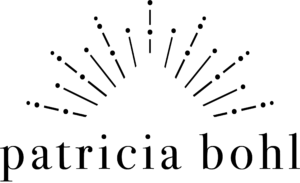How to create Buyers’ Personas and increase your following
Introduction
As a Yogi, you have decided to follow your calling and live a life that is authentic and giving. You want to share your offerings, teach Yoga and enjoy an abundant life. You want to create a sustainable career that will enable you to expand your following and make a difference. This realisation is where marketing comes in.
When people make buying decisions – or where to practice Yoga decisions – they naturally gravitate towards what they know and trust. As Yoga is a way of life and an integrated system for the body, mind and inner spirit, the pairing of a teacher with a student is not a simple buying decision. Every Yoga teacher is unique, and this unique vibe automatically attracts the ideal buyer/student. It’s a natural process that goes both ways.
However, for people to gravitate towards you, it is vital that they know you. The best way to form a relationship with them is to open up to them and manifest genuine empathy and consideration. You need to address their concerns and offer answers to their queries. Only then will they be open to you and your unique vision.
This is the beginning of your marketing journey. In order to be in a position where you can actually understand their reality and address their genuine concerns, you need to define the characteristics of your ideal student. In marketing terms, you need to create your Buyer’s Personas and find the answers to questions like who they are, what they do, what motivates them to come to you?
Defining a Buyer’s Persona
A Buyer’s Persona is a tool. It is a marketing tool that can help you identify your target audience – your ideal following. It enables you to find the people who care about your message and want to share your vision. The people that will make your Yoga teaching sustainable and rewarding.
A Buyer’s Persona is a fictional – yet researched – representation of your ideal student. It depicts your target buyer, what their days are like, what challenges they face, and how they make their decisions. The strongest buyer personas are based on visualization and research as well as on insights you collect from your actual students (through surveys, interviews, etc.) To craft a persona, you get to ask yourself in-depth questions about your ideal customers, and this alone will help you realise/notice things you hadn’t before.
Depending on the range of programs you practice, you could have one or two personas, or as many as 10. If you offer a wide range of programs you need more personas. For example, if you offer beginners classes, hot yoga, power yoga and Hatha classes, you should develop several different personas to reach the prospective students for each type of course. It helps to give your personas unique names, such as Hatha Jane or Hot Yoga Helen.
When you first create your buyer personas, start small! You can always develop more personas later.
How to use Buyers’ Personas
Once you have created your Buyers’ Personas, you can tailor your marketing campaign with unique messaging to reach each of your target students. It also makes it easier for you to understand your customers (and prospective customers) better and empathize so you can tailor your offerings to the specific needs, behaviours, and concerns of different groups.
As a self-employed yogipreneur you have a website and a blog where you share thoughts, insights and experiences for Yoga programs. You want to attract followers who are interested in hiring a Yogi for their practice. A buyer persona will help you narrow your focus and adjust your website and Instagram to target this specific niche. This customized approach will make it easier to create content for your website and select topics – and images – that resonate among your target following.
How to create your Marketing Persona
You can create your buyer personas through visualisation, research, and interviews of your target audience. A good place to start is the description of the ideal student at your studio or a retreat. Here is how to gather the information you need to develop personas:
- Reflect on the kind of experience you want to offer. What is your intention when you are teaching? Do you lean towards a more physical flow or are you more into the spiritual side of Yoga? Define the experience that is aligned with your own calling and imagine your ideal student.
- Talk to your students to discover what they like about your Yoga practice.
- Go through your contacts and look for trends about how students find you and choose your practice.
- Perform research on social media. Use social media – Twitter, Facebook, Instagram, etc. – to find your potential customers expressing their views or asking questions or airing problems your Yoga practice can address.
- Ask your students questions. Who knows your buyers better than they know themselves? Questionnaires and interviews are often a critical component of building a useful marketing persona. Interviews can reveal a deep insight into your students since you can dig into their answers and follow up with the goals, values, and pain points that resonate the most with them.
- At a later stage, you could use data captured from your website, using Google Analytics. You could get insights about what they like and what content is engaging to which group.
Questions to ask
A persona includes details like age, gender, location, income, interests, values and challenges. Personas should answer questions like:
- What is the age of the ideal student?
- Is the ideal follower a man or a woman, or both?
- What is their professional life like?
- What do they do to enjoy themselves?
- Where do they live?
- What are their Yoga goals?
- What could prevent them from joining your studio or retreat?
- How much money are they willing, or able, to spend on Yoga classes?
Let’s use the example of your Studio. You can ask them why they chose it. You need to be as specific as possible when asking questions to develop your persona. It is important to dive deeper into their answers to find the true driving factor.
- Cost – ask about limitations and importance
- Teaching quality – explore specific aspects of the practice
- Availability – explore the convenience of practice hours
- Location – are they willing to travel far for a particular retreat?
- Personal needs – explore their personal drive for practising Yoga
Here is an illustration of the main components you need to create your very own Buyer’s Persona.
|
Yoga Kate – Ideal student |
|
|
Her place of work Her responsibilities
Demographics • Age • Gender • Household income • Location • Education • Family
Values and fears • Primary values • Common objections during consideration process
|
Her Goals • Primary goal • Secondary goal How your Yoga can help her achieve these goals
Her Personal challenges • Primary challenge • Secondary challenge How your mission can help her solve these problems
|
Two Notes to remember
- Talk to your students
It is important to remember that nothing can replace talking to your students. If you base your personas on generic ideas and esoteric reflections about their actual lives, you will not achieve much. Make it a goal to spend a few hours a month interviewing new students. Ask them to walk you through their decision, starting with the moment they decided to come to your class. Each in-depth conversation should take 20 or 30 minutes, but the time it will save you in planning, writing, and revising content for each buyer persona will be immeasurable.
- Truly listen
Be open to their truth, their reality and engage in an honest conversation. Have a genuine, unscripted conversation that will lead your students to tell you, exactly how they weighed their options and compared your offerings to those of other yogis. The key to success in developing a buyers persona is asking probing questions based on their answers. For example, if they tell you they chose you because your program is easy to follow, you might ask follow-up questions to understand what aspect of the program they consider to be easy. Another follow-up question might be to ask about the resources they consult or steps they take, to compare your program’s elements to other options.
Conclusion
Buyer personas are research-based profiles that represent your ideal students and help you adapt key aspects of your offerings and communication. Clarifying the types of people that benefit from your perspective, is critical to your efforts to attract and retain a following. Just remember that the only way to gather clear, unfiltered insights about how your students make decisions is to have a discussion and truly listen to them.
Make sure to share what makes your Yoga uniquely distinct, and you will surely attract the right people that share your vision.


 Photo by Karina Lago on Unsplash
Photo by Karina Lago on Unsplash